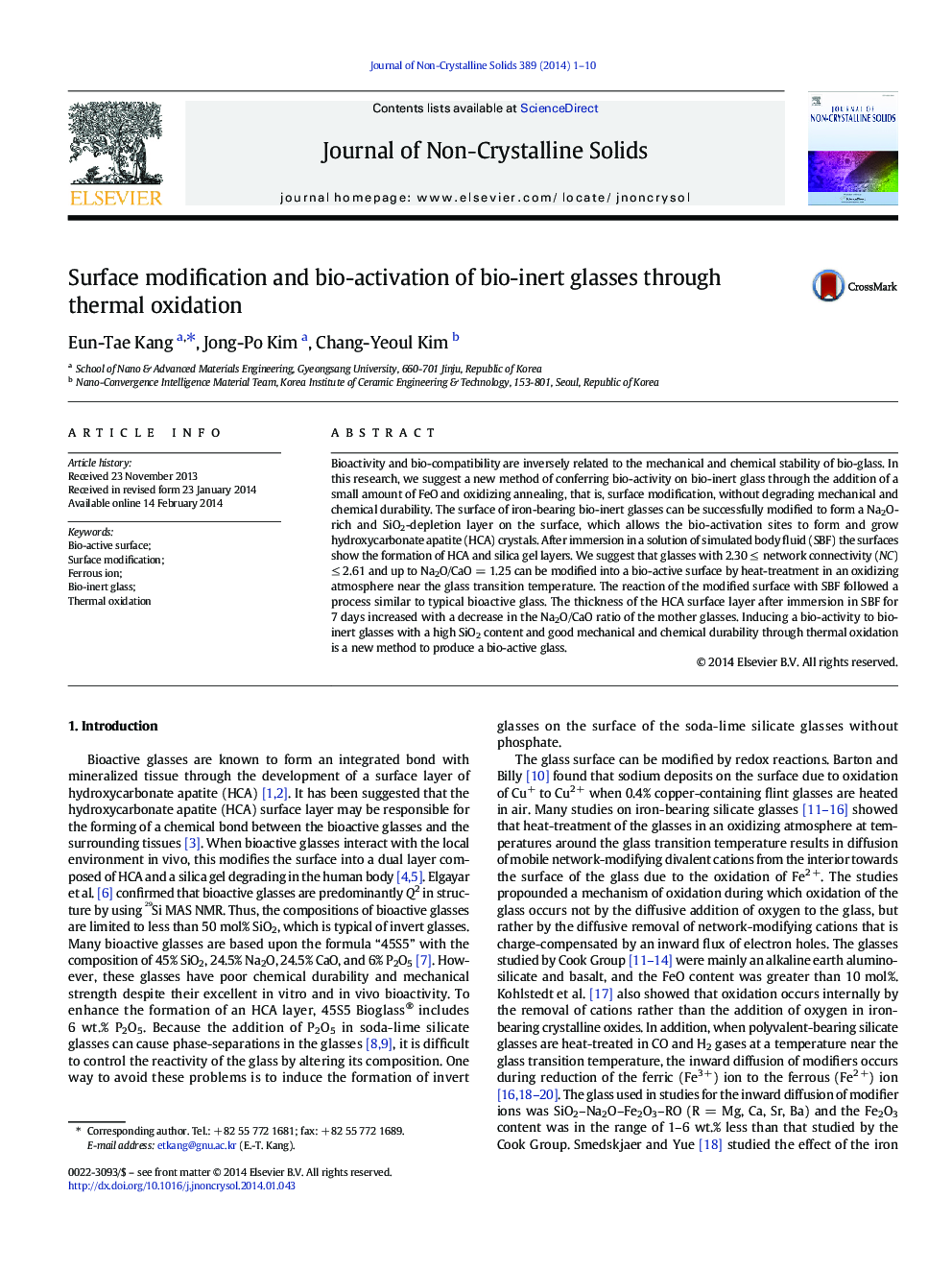| Article ID | Journal | Published Year | Pages | File Type |
|---|---|---|---|---|
| 1481057 | Journal of Non-Crystalline Solids | 2014 | 10 Pages |
•Fe2 + bearing bio-inert glasses were surface modified by oxidation annealing.•Na-rich layer formed on the surface shows the formation of hydroxycarbonate apatite.•The bioactivity is increased with the decrease of Na2O/CaO ratio in the mother glass.•The surface of bio-inert glasses can be modified into a bio-active one.
Bioactivity and bio-compatibility are inversely related to the mechanical and chemical stability of bio-glass. In this research, we suggest a new method of conferring bio-activity on bio-inert glass through the addition of a small amount of FeO and oxidizing annealing, that is, surface modification, without degrading mechanical and chemical durability. The surface of iron-bearing bio-inert glasses can be successfully modified to form a Na2O-rich and SiO2-depletion layer on the surface, which allows the bio-activation sites to form and grow hydroxycarbonate apatite (HCA) crystals. After immersion in a solution of simulated body fluid (SBF) the surfaces show the formation of HCA and silica gel layers. We suggest that glasses with 2.30 ≤ network connectivity (NC) ≤ 2.61 and up to Na2O/CaO = 1.25 can be modified into a bio-active surface by heat-treatment in an oxidizing atmosphere near the glass transition temperature. The reaction of the modified surface with SBF followed a process similar to typical bioactive glass. The thickness of the HCA surface layer after immersion in SBF for 7 days increased with a decrease in the Na2O/CaO ratio of the mother glasses. Inducing a bio-activity to bio-inert glasses with a high SiO2 content and good mechanical and chemical durability through thermal oxidation is a new method to produce a bio-active glass.
Graphical abstractSchematic diagram of mechanism of HCA formation after the surface modification by oxidation annealing.Figure optionsDownload full-size imageDownload as PowerPoint slide
